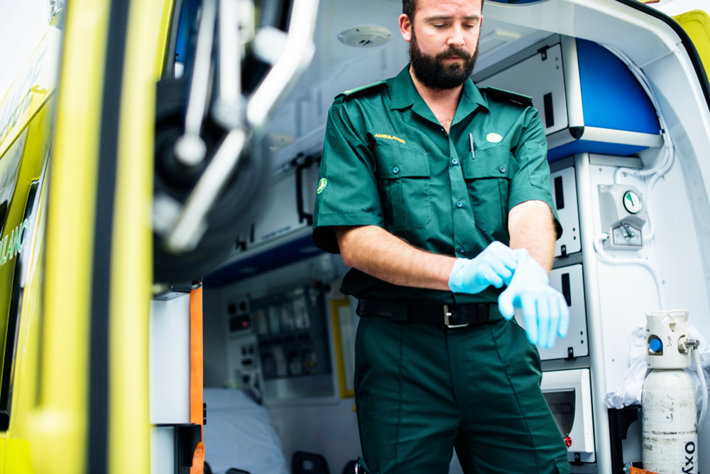Fentanyl Overdoses Still on the Rise

Some newsworthy developments on the subject of opioid overdoses have been published recently. On the one hand, recent reports indicate that overdose deaths from most opioids have dropped slightly. But those same reports also suggest that fentanyl-related opioid overdose deaths are continuing to increase—alarmingly so in some areas.
An article in U.S. News reported on a reduction in overall opioid drug overdoses in some states. The news source also reported on an increase in fentanyl-specific overdoses in those same states. U.S. News was getting its data from a research paper published by the Centers for Disease Control and Prevention.
What’s the story on overdose reductions? What does that mean for the rest of the states that have not yet experienced these reductions? And perhaps most importantly, does this news change our approach or attitude to the drug problem?
The News Story
In 2018, 25 states saw reductions in total deaths from opioids. However, deaths from the fentanyl category specifically are still going up, and at a pretty drastic rate. Furthermore, overdose deaths from other drugs mixed with fentanyl are also on the rise. That means people are now overdosing on benzodiazepines, cocaine, and methamphetamine, all with increasing regularity, and all because these drugs are starting to have fentanyl added to them by dealers. Most people who take benzodiazepines, cocaine, and methamphetamine are not informed of the fact that such drugs have fentanyl in them, and they are thus taken by surprise. Sometimes, sadly enough, it is a fatal surprise.
One could say that the fentanyl market is diversifying, and the result is that more people are dying from overdoses on a broader range of drugs. That makes addressing the problem even more difficult. Now, an even more extensive range of drugs are likely to be fatal. But even if solving the issue is more complicated, it has never been more crucial than it is right now to address the problem.

Emily Feinstein, based out of New York City and the executive vice president and chief operating officer of the Center on Addiction, commented on the issue: “Over the past few years, fentanyl has been the primary driver of opioid overdose deaths, and the latest CDC data confirms this trend has continued.”
Feinstein went on to discuss how deaths from cocaine and methamphetamine are on the rise. One reason for this increase is that people are merely using these drugs with growing frequency. Another reason is that these drugs are now being sold with traces of fentanyl added to them. Such hybrid drugs are more potent and more addictive. Drug dealers intend to make the drugs stronger in order to hook more people and thus sell more drugs. In fact, interest in these drugs and the resulting increase in overdose deaths because of them has almost canceled out the total reduction in other types of opioid drug deaths. As the use of one type of drug became less prominent, another increased.
Taking a closer look at this, while overall opioid deaths in 25 states dropped by five percent, fentanyl-specific deaths (a large percentage of total opioid deaths) went up by a considerable margin. Furthermore, overdose deaths which involved fentanyl and benzodiazepines, cocaine, or methamphetamine went up 63 percent.
“… Fentanyl has infiltrated the drug supply beyond heroin and other opioids—it’s been found in cocaine, methamphetamine, fake or ‘pressed’ Xanax pills, and has even been found in marijuana.”
Emily Feinstein commented again on the unique nature of increasing fentanyl-related overdose deaths. “Fentanyl is an extremely potent drug when used alone, and increases the risk of overdose when mixed with other drugs. … Fentanyl has infiltrated the drug supply beyond heroin and other opioids—it’s been found in cocaine, methamphetamine, fake or ‘pressed’ Xanax pills, and has even been found in marijuana.”
And let’s keep something fundamental in mind here; even if opioid overdose deaths have dipped slightly, it’s not much to celebrate. From 2013 to 2017, the number of opioid-related drug overdose deaths increased by ninety percent, from 25,000 opioid deaths in 2013 to 47,600 opioid-related overdose deaths in 2017. We still have a long way to go to reduce the annual death toll back down to the pre-2014 overdose rates.
Feinstein closed her statements by talking about how the only way to turn the tide of addiction and overdose deaths is by offering, “Quality, affordable care to everyone who needs it.” And she’s correct. The only way to adequately address this problem is to help those who are addicted get into and through residential drug rehab programs. When struggling addicts have access to residential drug rehabs, they can halt and reverse the decline of their lives. They’re able to completely eliminate their odds of experiencing an overdose. They’re able to make a phenomenal turnaround.
Helping Your Family Members, Loved Ones and Friends Get Clean and Stay Clean
We have to be very careful when we hear good news in the addiction scene. There is very little good news to be shared on this subject, for starters (except when people get off of drugs). And when we do experience a small victory, as in the case of overdose statistics receding slightly, we have to be very careful not to celebrate that victory too much. We don’t want to even think about resting on our laurels in the constant battle against the drug problem.
Instead, we have to refocus our attention wholeheartedly on reversing the opioid crisis, on helping those who are currently addicted to drugs and alcohol to break free from those habits. The addiction battle is not yet won. Realistically, there is no real victory until everyone gets off drugs and alcohol.
If you know someone who is struggling with a drug or alcohol addiction, work with them and help them get into a drug and alcohol rehab center. Don’t assume that because overdose deaths are on a downturn that the problem has now solved itself. It has not. Do your best to help those you know who need help. We can’t stop working together to eliminate addiction in the U.S. until everyone who needs help has gone through treatment and has gotten clean and sober.
Sources:
- https://www.cdc.gov/mmwr/volumes/68/wr/mm6834a2.htm?s_cid=mm6834a2_w
- https://www.usnews.com/news/health-news/articles/2019-08-29/us-opioid-deaths-take-a-small-dip-as-fentanyl-leaves-deadly-mark
Reviewed by Claire Pinelli, ICAADC, CCS, LADC, MCAP, RAS


